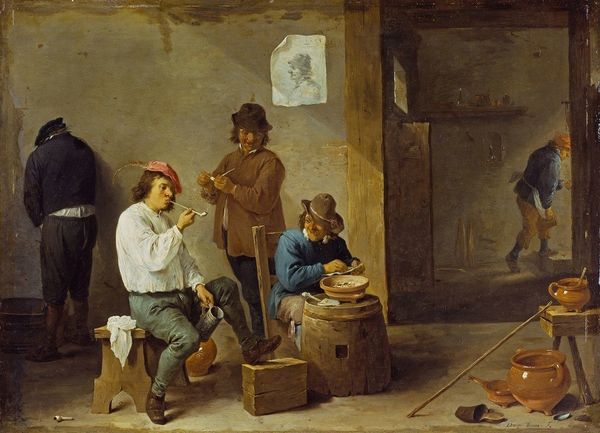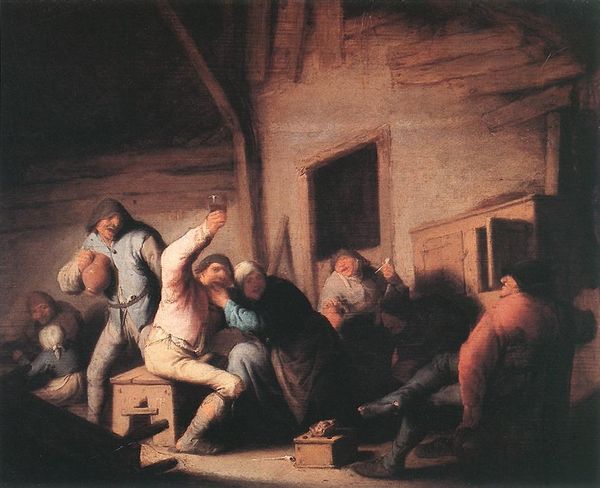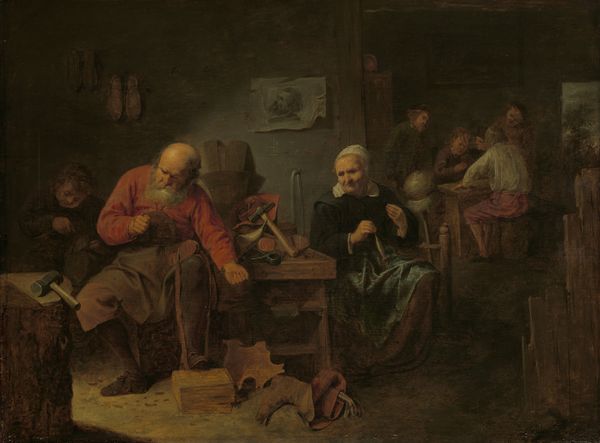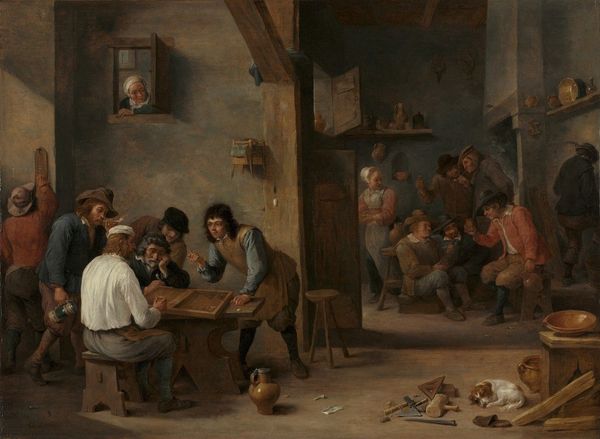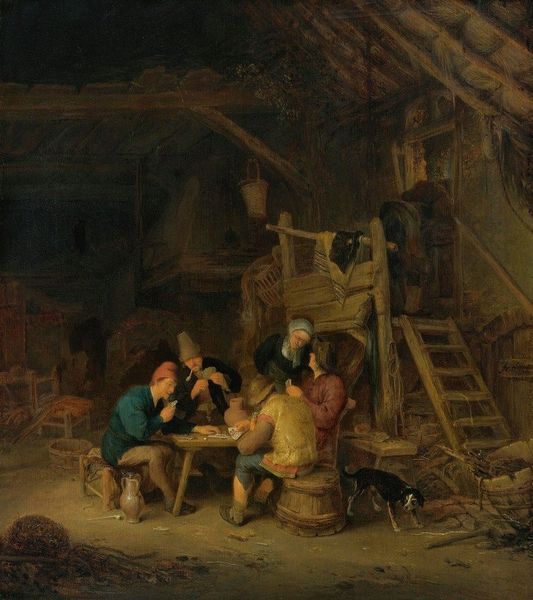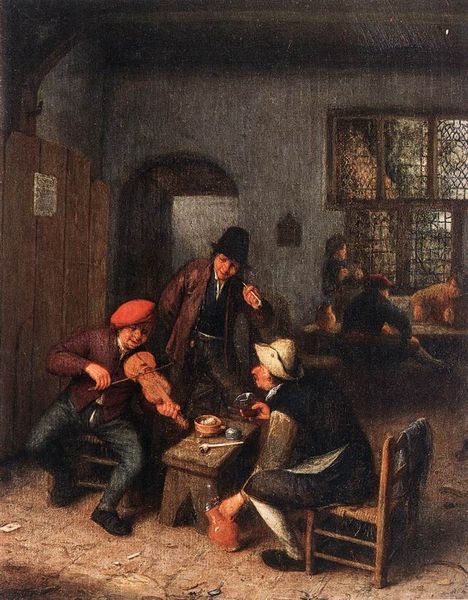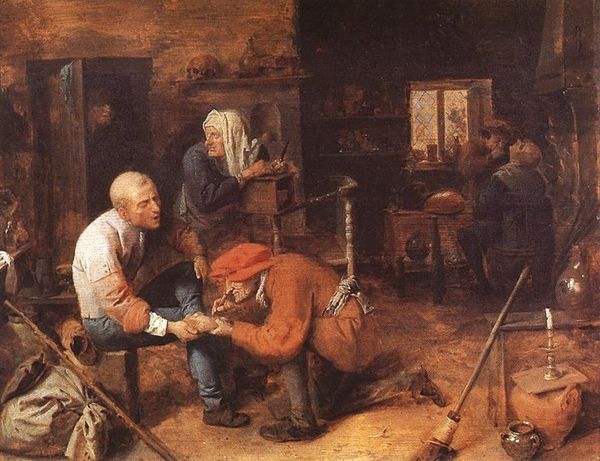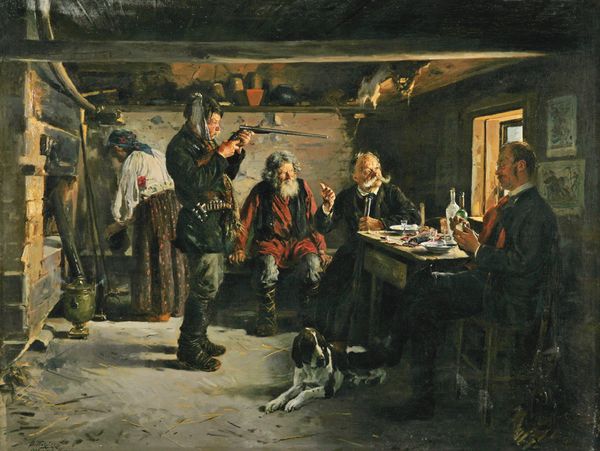
#
steam punk
#
cosplay
#
sculpture
#
culture event photography
#
derelict
#
dark-toned
#
dark silhouette
#
costume
#
solarpunk
#
film
Copyright: Public domain
Editor: Eastman Johnson's "The Counterfeiters," painted in 1853, is rendered in oil on canvas. The scene feels cloaked in shadow, creating an immediate sense of intrigue and perhaps a touch of unease. What underlying stories and power dynamics do you think Johnson is trying to expose here? Curator: Johnson’s piece gives us a peek into a marginalized underclass, so deeply intertwined with notions of labor, morality, and the American narrative of ambition versus reality. How might we view these individuals through a lens of economic disparity and its impact on societal roles? Editor: That's a really interesting angle. So, the figures hunched over their work – how does their positioning in the composition contribute to the overall narrative? Curator: Note how Johnson uses chiaroscuro to isolate and highlight specific figures within the dimly lit space. Are we meant to sympathize with their plight, or are we prompted to condemn their illicit activity, and how much does this rely on *our* position? Editor: That pushes me to think about the woman standing at the left – seemingly apart, yet present in the same scene. Curator: Precisely. Does she represent complicity, a silent observer, or perhaps a moral compass? Think about the unspoken social constructs governing her choices versus the choices of the men at the table. Editor: This reframing makes me rethink how social structures influenced individual lives. Thanks for opening my eyes. Curator: Indeed. Seeing art as embedded in societal struggles helps us understand it anew.
Comments
No comments
Be the first to comment and join the conversation on the ultimate creative platform.
